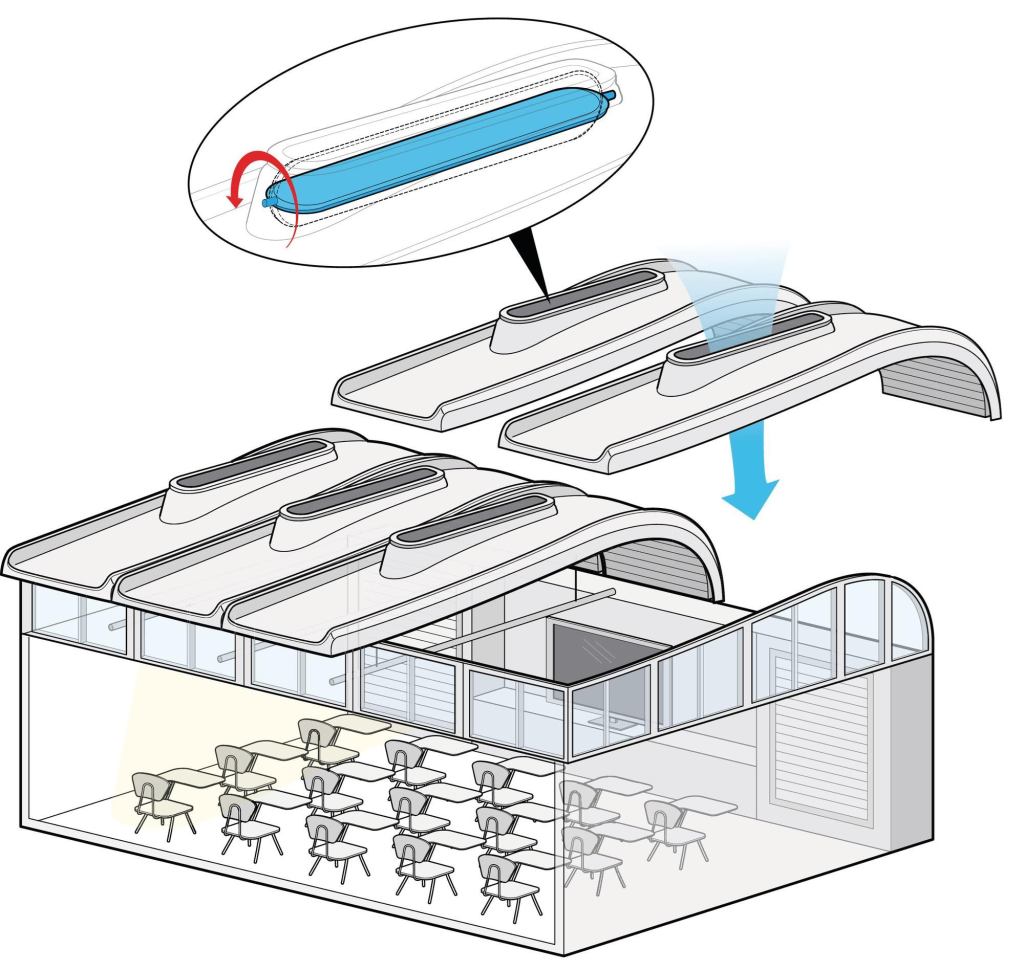If we are going to have civic and infrastructural anchors in our society, they need to be smart. They have to be efficient, effective, and, I would add with a perhaps archaic adjective, ennobling. They need to work, but they also need to be beautiful, because they need to offer us that something more that draws us out of ourselves, to each other and to the world we have made together and share.
Our civic structures are not very flexible or useful, though they can be beautiful. Back in May, I wrote about how new road technology has the promise to make life in our cities better by suppressing sound and reducing everything from traffic jams to resistance and thus fuel use. Unfortunately, it is invisible. What we are creating is either absurdly expensive and beautiful in a look-ma-no-hands sort of way, like Calatrava’s downtown Manhattan transit hub, or completely banal and even ugly, like most of the bridges currently under construction in this country.
Last year, Craig Hodgetts and Ming Fung, of Hodgetts + Fung Design & Architecture (HFDA) tried to make one small contribution to efficient and smart infrastructure that was also beautiful. (Full disclosure: I worked for HFDA twenty-five years ago.) As part of a program initiated by the Los Angeles Unified School District (LAUSD), they devised “Building Blocks,” a modular classroom that won a 2012 R+D Award. The system consists of fiberglass laminated panels in different colors, as well as prefabricated windows and doors, fitted into a steel frame on a concrete pad, and a line of clerestory windows, all surmounted by a prefabricated steel and fiberglass roof module.
Picking up on the current vogue for building kits and DIY assembly, but also on a long tradition of architects dreaming of mass producing buildings like cars (Hodgetts originally trained as an automotive designer), Building Blocks proposes that we can provide good spaces at a low cost by using current technology. That includes not just manufacturing, but also distribution and outsourcing that would let schools assemble these pieces with ease.
What sets this system apart from many other attempts to do more or less the same thing is its beauty and elegance. HFDA has a long history of making simple, expressive structures using off-the-shelf components, and here they reduce the act of architecture to proportions, color, and gesture. The roof, whose whiplash skylights they developed using current boat building methods.
There is no traditional hierarchy or monumental sensibility in HFDA’s Building Blocks. Their sense of place would depend on their placement on the site, and that would in turn rely on the common sense and site-conscious sensibilities of other architects and clients. As a beginning for a way to make a good place to learn and teach, however, this project offers the advantage of being doable, and being elegant in its own, modest manner.
Unfortunately, after initial enthusiasm and support, the LAUSD did not go forward with the project. In a sign of the times, they reportedly used the money allocated for Building Blocks to purchase iPads for students. Given the cost of those devices, I wonder about that use of resources, but it also indicates our unwillingness to invest in real things and places in a time where everything is becoming virtual. HFDA met that trend as far as I think we should, but then proposed something that would frame the virtues of being and learning together in a real place. We need the same sort of attitude in all our infrastructure, from the largest feats of engineering to the smallest gesture of social service.
Aaron Betsky is a regularly featured columnist whose stories appear on this website each week. His views and conclusions are not necessarily those of ARCHITECT magazine nor of the American Institute of Architects.
